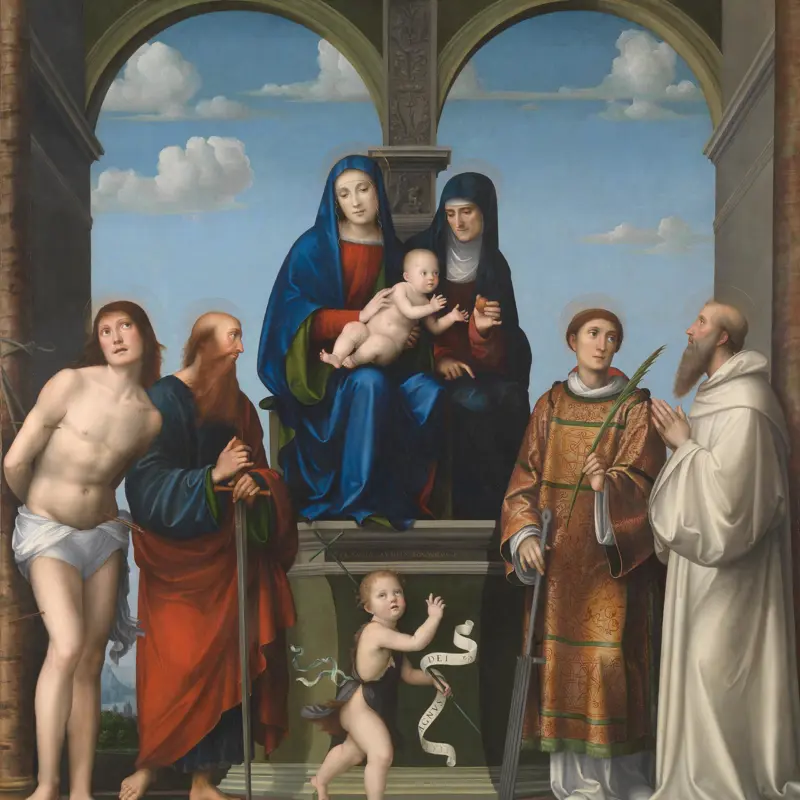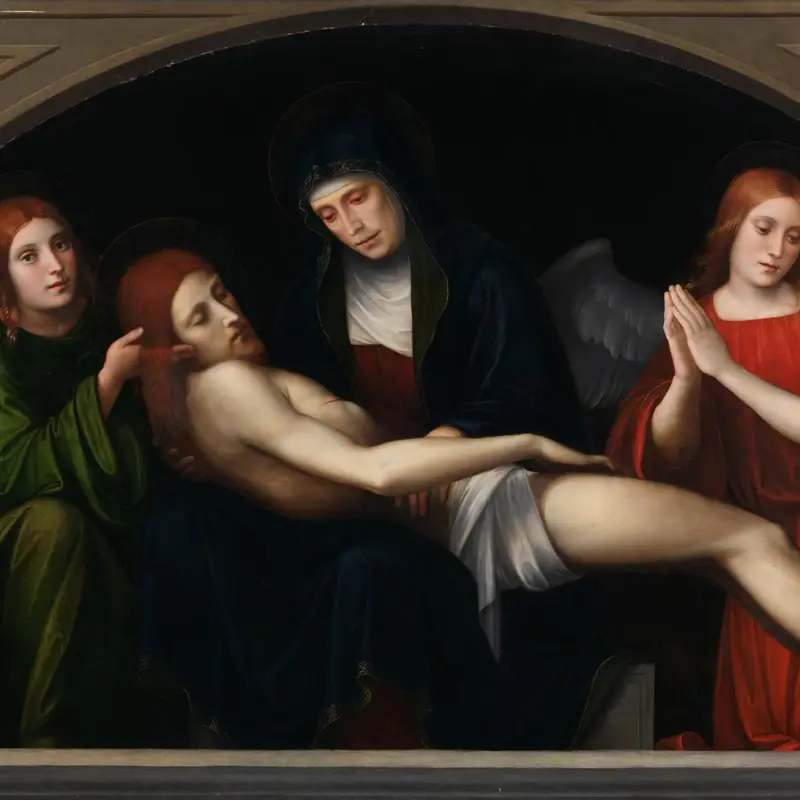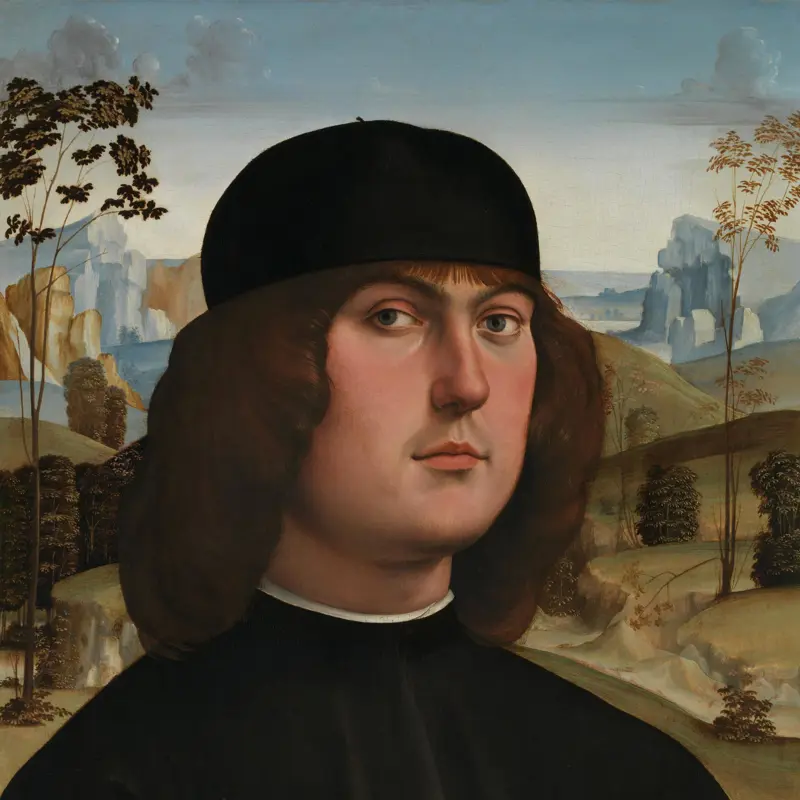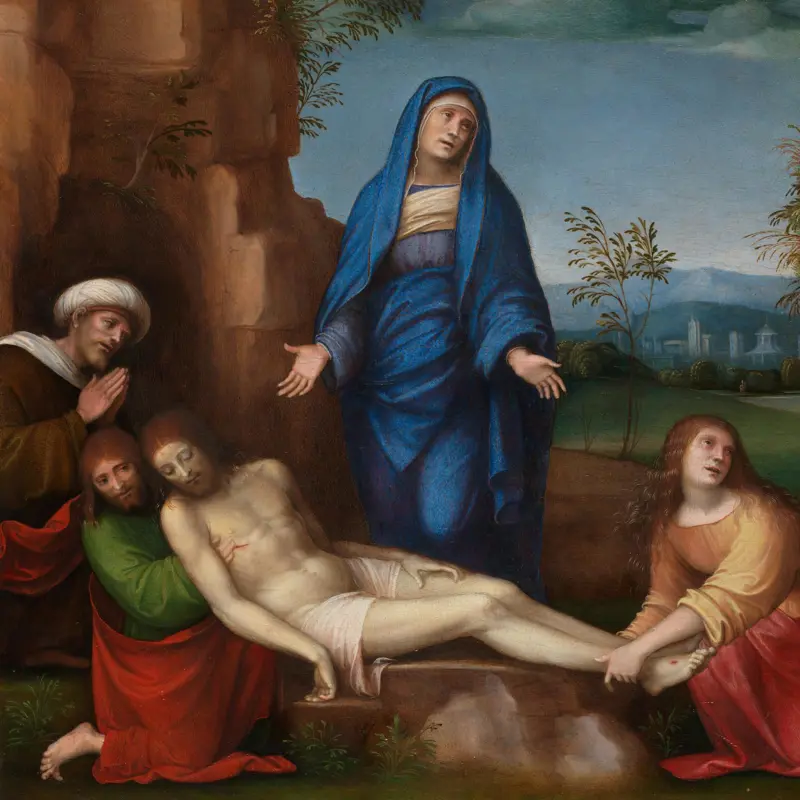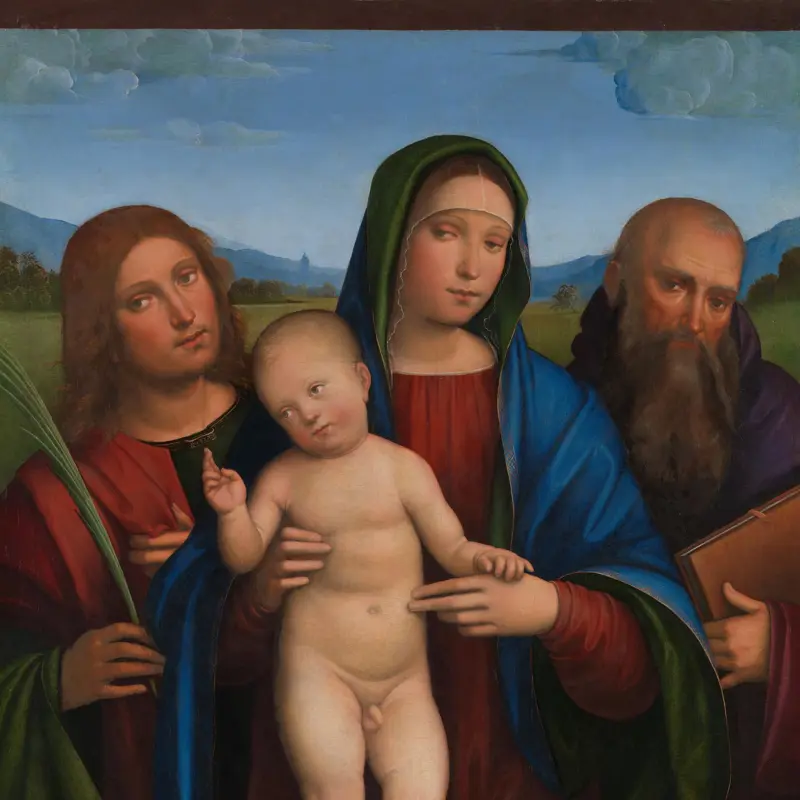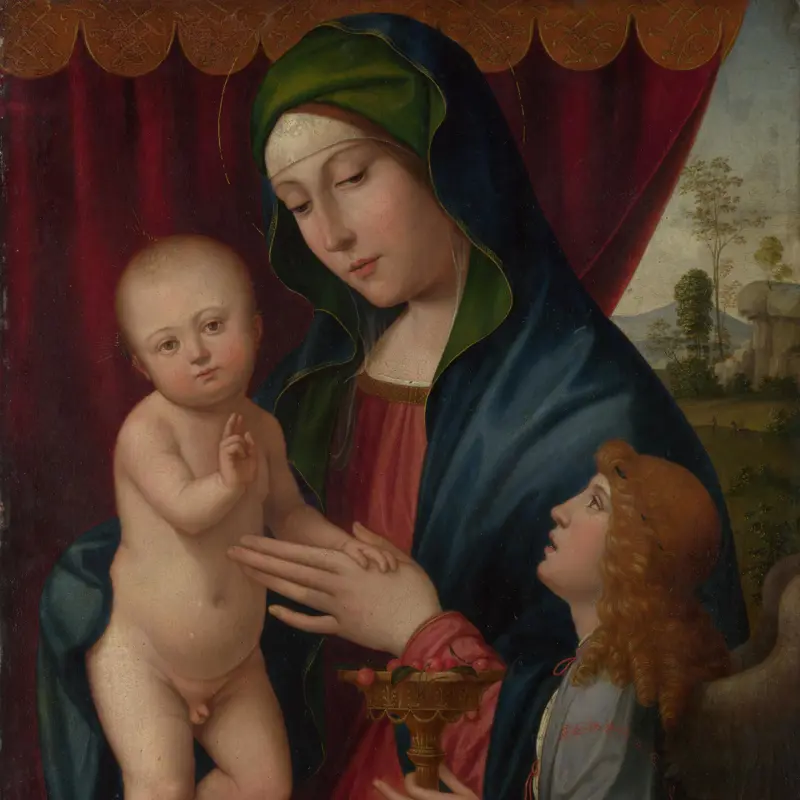Francesco Francia, 'The Pietà', 1510-12
About the work
Overview
This semicircular painting forms the upper part of the altarpiece painted for the Buonvisi family chapel in the church of S. Frediano in Lucca.
The Virgin Mary grieves over the body of her son Christ, laid across her lap, her eyelids red and puffy from weeping. An angel holds Christ’s head; another, hands joined in prayer, looks at the wounds on his feet. These were made by the nails that attached him to the Cross on which he was crucified. The angel at Christ’s head is the only figure in either part of the altarpiece to directly meet our gaze, drawing our attention to Christ’s sacrifice for humanity.
The main part of the altarpiece shows the young Virgin enthroned with the infant Christ and her mother, Saint Anne, accompanied by saints. In that painting, the Virgin’s thoughts are already on the destiny awaiting her son, which we see here, in the scene above.
Key facts
Details
- Full title
- The Pietà
- Artist
- Francesco Francia
- Artist dates
- about 1447 - 1517
- Part of the group
- The Buonvisi Altarpiece
- Date made
- 1510-12
- Medium and support
- oil on wood
- Dimensions
- 94 × 184.5 cm
- Acquisition credit
- Bought, 1841
- Inventory number
- NG180
- Location
- Room 6
- Collection
- Main Collection
- Frame
- 19th-century English Frame
Provenance
Additional information
Text extracted from the ‘Provenance’ section of the catalogue entry in Giorgia Mancini and Nicholas Penny, ‘National Gallery Catalogues: The Sixteenth Century Italian Paintings’, vol. 3, ‘Bologna and Ferrara’, London 2016; for further information, see the full catalogue entry.
Bibliography
-
1951Davies, Martin, National Gallery Catalogues: The Earlier Italian Schools, London 1951
-
1986Davies, Martin, National Gallery Catalogues: The Earlier Italian Schools, revised edn, London 1986
-
2001
C. Baker and T. Henry, The National Gallery: Complete Illustrated Catalogue, London 2001
-
2016Mancini, Giorgia, and Nicholas Penny, National Gallery Catalogues: The Sixteenth Century Italian Paintings, 3, Bologna and Ferrara, London 2016
Frame
In the nineteenth century the National Gallery commissioned an altar frame to house two distinctive paintings by Francia, including The Pietà. A slip frame holds both this and Francia’s The Virgin and Child with Saint Anne, the Infant Saint John the Baptist and Four Saints. An arched opening is created by spandrels, which have a decorative engraved ornament.
The decoration on the entablature is inspired by ornamentation found on a doorway of the church of S. Giobbe in Venice. The cornice features dentils, an egg-and-dart pattern and pearls, while the dark blue frieze is adorned with a palmette and acanthus-leaf pattern and scrolling flowers.
The architrave is embellished with pearls, along with a double bead-and-reel motif. The simple fluted pilasters and Corinthian capitals with shells at their centre are Tuscan in style. The gilded base and its blue-painted predella are both decorated with an egg-and-dart motif. The frieze contains a gilded inscription of the artist’s name and the title of the painting.
About this record
If you know more about this work or have spotted an error, please contact us. Please note that exhibition histories are listed from 2009 onwards. Bibliographies may not be complete; more comprehensive information is available in the National Gallery Library.
Images
About the group: The Buonvisi Altarpiece
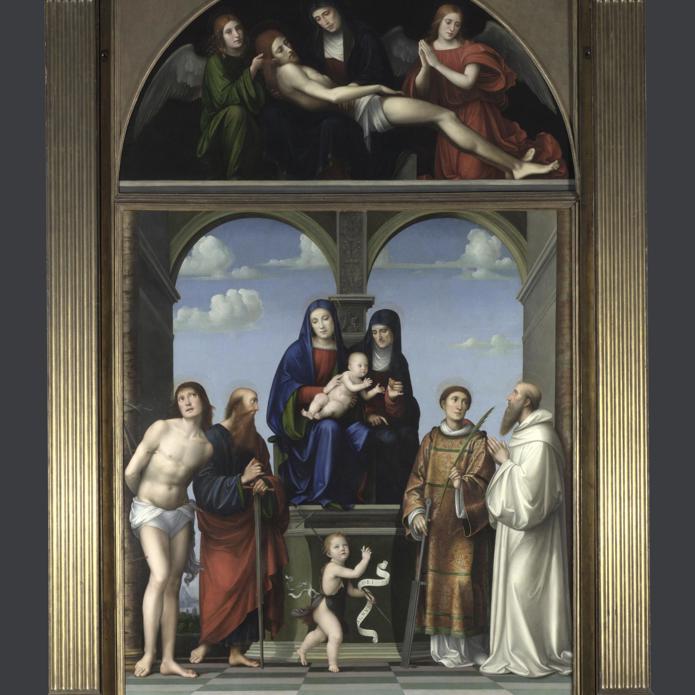
Overview
This altarpiece was painted for the Buonvisi Chapel in the church of S. Frediano in Lucca. It shows the Virgin Mary with her mother, Saint Anne, and the infant Christ enthroned and surrounded by saints, from left to right: Saint Sebastian, Saint Paul, Saint Lawrence and Saint Benedict.
In the main panel, the young Virgin sits holding her baby, thinking about his future sacrifice. The scene carved on the pillar behind her head represents the sacrifice of Isaac (Genesis 22: 2), when God ordered Abraham to sacrifice his son but at the last moment supplied a lamb instead. In Francia’s altarpiece, the infant John the Baptist’s banner reads ‘ECCE AGNUS DEI’ (‘Behold the Lamb of God’). His message is that Christ must be sacrificed but that no lamb will be exchanged in his place.
In the semicircular panel above the main panel, the elderly Virgin grieves over the lifeless body of her son who has been sacrificed for the salvation of mankind.

